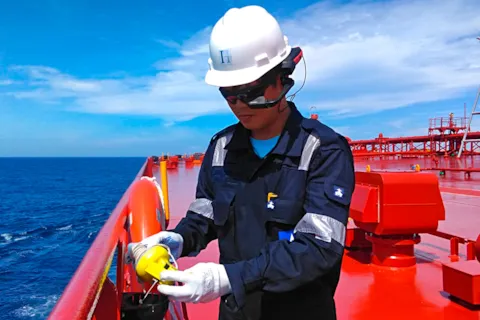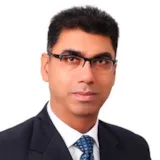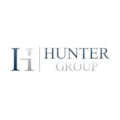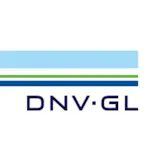Get regular tanker insights!
Don’t be left out. Join the many others and sign up today to receive the latest insights.
sign up
Hunter Tankers has added seven eco-design smart VLCCs to their fleet. While five have already been delivered from DSME, Sujoy K Seal, COO Hunter Group, shares his experiences on the benefits and challenges of implementing smart technology solutions on board.


Sujoy Seal has served as COO for Hunter Group since May 2018. Within his more than 30 years of experience in maritime newbuilding in technical and commercial segments, he has been involved in more than 50 newbuilding projects in Korea. He has held senior positions within the industry. Most recently with Aurora LPG, Atlantic Tankers AS, Aurora Wilhelmsen Management Ltd., Tranpetrol TM and BW Group. Mr. Seal holds a B.E. in Marine Engineering, all relevant STCW certificates as well as a certificate of Proficiency as Assessor issued by the Norwegian Maritime Directorate.
What kind of new technologies did you invest in to make your fleet smarter?

We wanted to have a robust IT solution on board. During the plan approval process, with necessary inputs from domain experts, we chose to have optical fibre cable on deck to avoid loss of signal due to the large distances on a VLCC. The Wi-Fi access points on deck ensure Wi-Fi signal in Hazardous Area Zone 1. We placed on board hardware such as a camera phone, a handheld tablet and a helmet-mounted Android tablet, all three of which are Ex-certified for use in Hazardous Zone 1. We have also implemented augmented reality (AR) solutions on board for in-built checklists, drawings, etc. An advanced ship-to-shore conferencing solution keeps us connected with stakeholders onshore.

Which safety measures have you put in place for these installations?

This was the first VLCC in the maritime industry to have Wi-Fi installed in Hazardous Area Zone 1. The initial conceptual phase of the project involved rigorous research and risk analysis. This included IECEx and EU ATEX certification of all the hardware used in Hazardous Area Zone 1. The Wi-Fi access points also possess an interoperability certificate. The radio frequency levels of the installed access points are in compliance with Table 4 of IEC60079-0 6.6.1. We have documented that the wireless installations comply with the national regulations where the vessel will operate. Data sheets and other specifications of access points and portable devices demonstrate compliance with environmental requirements such as temperature, humidity, vibration, IP rating and electromagnetic compatibility according to DNV GL rules.

How did DNV GL support you in that process?

DNV GL and its experienced teams, both in Geoje and Høvik, were very supportive during the entire process of this study. The previous experience of DNV GL on such installations on offshore units and their findings helped us in resolving the challenges.

Which of the installed digital tools support and enhance efficiency when working with class or in emergencies?

Remote surveys and audits help reduce operational disruptions. The digital tools and hardware, including AR, allow us to give live feeds from the vessel to DNV GL to show any equipment failure and how the failure has been rectified. This process also ensures that our company’s core values of “Transparency in operation” are met. The Wi-Fi on deck allows the use of the Kongsberg K-Gauge application, which reflects the cargo, fuel and ballast tanks on the portable equipment. The connection enables us to have a live audiovisual (AV) feed to a medical centre during medical emergencies on board and subsequent medical advice. We can also have a live AV feed during other types of emergency, such as a collision, oil spill, etc. This solution will save time and allow the master and the management team on board to focus on handling the critical situation and mitigate further risks.

Is special training needed for the crew for these new tools?

Since this was a first in the tanker industry, some special training was given to the crew at the yard for the use of all the equipment. But with most staff on board familiar with smartphones, training the staff was relatively easy.

What actions have you taken to make these systems cyber secure?

There are firewalls in place with stringent access levels to prevent a cyber attack. The firewalls have been provided by Dell, Inmarsat and Kongsberg. Only authorized and approved equipment can be used with the Wi-Fi on deck. This will not only prevent any external devices being used but also prevents the use of non-Ex-rated equipment.

How does a notation like DNV GL’s SmartShip notation enable you to stay ahead of your competitors?

The SmartShip notation is a futuristic concept of DNV GL, and Hunter Tankers is proud to be the first fleet of VLCCs to have such a notation. This is in line with the company’s policy of delivering innovative solutions for safe and efficient operation. Having the notation validates the advanced digital solutions on board our fleet. During the SIRE inspections, we received positive feedback on the solution from the inspectors.

In these challenging times, where travel and close personal business contact are restricted, do you already see an advantage of these technologies in regard to business continuity?

We never envisaged the COVID-19 outbreak when in 2019 we decided to equip our fleet with advanced digital solutions. However, we do see this solution clearly can help mitigate some of the challenges and risks associated with global disruptions affecting the industry. Our installed technologies have helped us to keep the fleet fully operational with remote audits, crew seminars, etc. Based on our experiences to date, we believe that AR will be a natural integral part of maritime operations in the near future. An obvious extension or next step of this would be that OCIMF conducts remote SIRE inspections. This will save time and reduce costs.

Don’t be left out. Join the many others and sign up today to receive the latest insights.
sign up